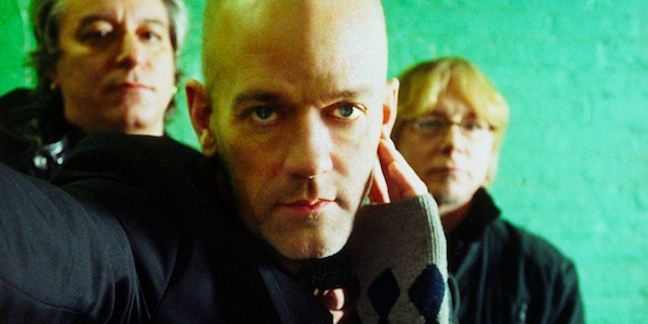
Michael Stipe Blasts George W. Bush and the Media in Essay About 9/11

R.E.M. singer Michael Stipe has written an essay titled “Thoughts on the 21st Century” about 9/11. It’s inspired by his personal experiences as a New Yorker, and by author/artist Douglas Coupland’s artwork that addresses the events of September 11 and the subsequent fallout. The essay appears in Coupland’s new book, Everywhere Is Anywhere Is Anything Is Everything, and was republished in The Guardian. It opens with his personal recollection of September 11, 2001:
On the morning of 9/11, I was asleep in my apartment on Jane Street in the Meatpacking District, just north of Ground Zero. I received a phone call saying New York was under a terrorist attack and that I needed to leave as soon as possible. I sat up in bed and heard the sirens outside my bedroom window. I looked down at my naked legs, and said out loud, “Oh fuck.” My notion of home had suddenly changed.
He talks about the attempt to ban the word “French” (due to France’s lack of support of the Iraq invasion) and his disappointment in the country:
Every time I see the Freedom Tower, I think of “freedom fries” – the term coined when the US wanted to invade Iraq, and France objected. Anything attached to the word “French” in the US was then relabelled with the word “freedom”: freedom toast, freedom fries, freedom kiss, for fuck’s sake. French wine was banned, French people were spat upon, their heads in photographs replaced with heads of weasels. Forget the Statue of Liberty and where it came from. It was a disastrous response—a horrid turn on the formerly leftist act of boycotting as protest. I’ve never been more embarrassed by my country, (except when we re-elected George W Bush and Dick Cheney). I largely blame the media for this egregious abuse of power and influence.
The Freedom Tower was meant to inspire patriotism and instead embodies the darker sides of nationalism. The 9/11 attacks and the Bush administration’s response, buoyed by the media, and our shock at having finally been direct victims of terrorism, paved the way for a whole new take on “We have nothing to fear but fear itself.” There was no longer any need to explain or publicly debate militaristic power, or the police state mindset. To do so was to be the opposite of a patriot.
Coupland’s artwork involves abstracted images of the people who leapt from the towers, and images of Osama bin Laden, who Stipe refers to as “the ultimate boogeyman.” To Stipe, these images help question what it is to be an American:
By evoking memories that can’t be deleted by wilful ignorance or overabstraction, Coupland reminds us that we all share a set of uncloseable doors in our minds, and through these opened doors, in an almost cartoon-like way, now march the NSA, Google, spooks, shadow governments, a lost, pathetic fourth estate, squandered militaristic might and rampant, terrifying nationalism. And while this procession occurs, we seem to be shrugging our shoulders and saying, “Eh, I’m still here! And I’m OK!! Let’s just get on with it!!!”
Support our troops!
Oh no … really? Is that who we are now? Blind, unquestioning, warlike? Are we that violent, that childish, that silly, that shallow? Are we that afraid of others? Of ourselves? Of the possibility of genuine change? Are we that easily swayed, that capable of defending “American interests”, whatever “American interests” means? Are we that racist, that terrified, that protective of an idea that we don’t even question what the idea has come to represent?
Read the whole thing here.













Recent Comments